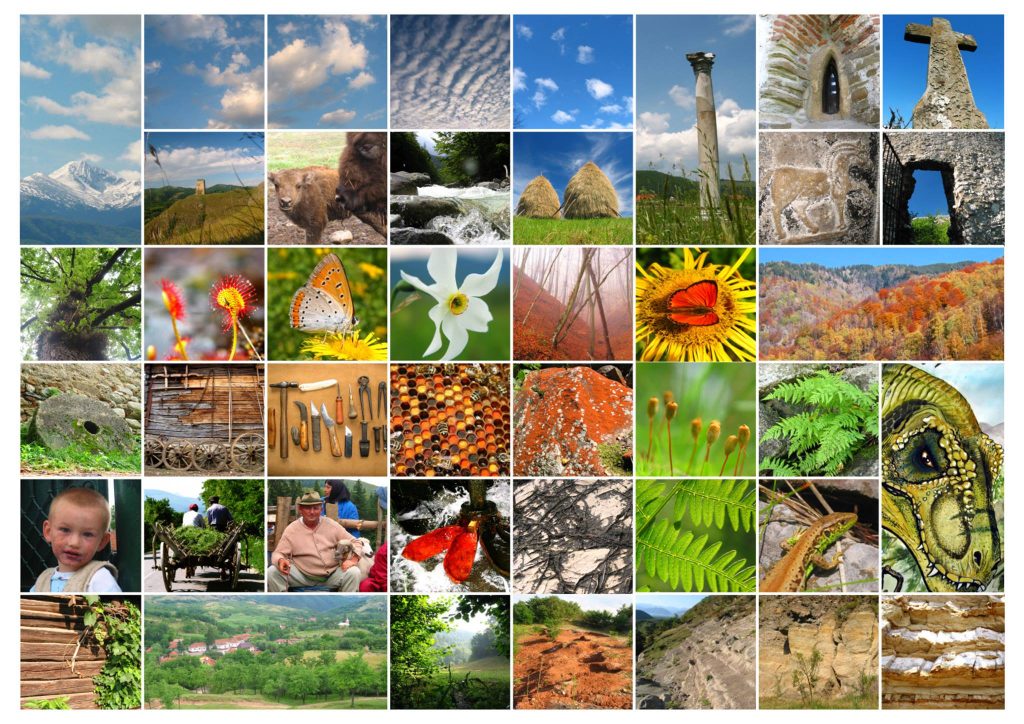popandreialexandru201352
1 Reviews
Voi merge acolo
M-a surprins textul despre el . Eu ador dinozaurii și cred că v-a fii genial
Deși pare greu de crezut, în condițiile în care alături avem astăzi statura impresionantă a masivului Retezat, cu flora și fauna sa alpină specifică pentru zona temperată, acum 70 de milioane de ani depresiunea Ţara Haţegului era o insulă tropicală vulcanică, scăldată de apele Oceanului Thethys. Pe ea trăiau dinozauri, crocodili, dar și uriașe reptile zburătoare! Astăzi, în această zonă suntem așteptați să vizităm un teritoriu complex, care adună laolaltă aspectele legate de geologie, biologie, dar și tradiții, obiceiuri și oameni și care poartă numele de Geoparcul Internațional UNESCO Țara Hațegului.

De obicei, turiștii se întreabă unde este situat Geoparcul? Ei bine, Geoparcul Internațional UNESCO Țara Hațegului nu este situat într-un loc anume. Nu vă așteptați să găsiți, în Depresiunea Hațegului, un DinoPark precum cel de la Râșnov. Geoparcul Internațional UNESCO Țara Hațegului cuprinde întreaga zonă, cu vulcanii ei de odinioară, astăzi stinși, și care împinși de forțele tectonice, au creat formele de relief din zonă. Acestor forțe uriașe datorăm geo și biodiversitatea zonei: putem vedea, aici, atât depuneri de pe fundul unui vechi ocean, cât și de roci formate pe vechea plajă preistorică.



Small dinosaurs, but not very small!
Geoparcul Internațional UNESCO Țara Hațegului este, de fapt, potrivit reprezentanților acestuia, un parc natural ce cuprinde întreaga Țară a Hațegului. El încearcă să protejeze și să pună în valoare atât natura (geologie și biodiversitate), cât și cultura locurilor (oameni, arhitectură, obiceiuri și tradiții). Geoparcul a fost declarat arie protejată de interes național în 2004, iar un an mai târziu a fost acceptat în Rețeaua Europeană a Geoparcurilor și în Rețeaua Globală a Geoparcurilor. El a inclus și două situri Natura 2000: „Situl Strei-Hațeg” și „Culoarul Rusca Montană – Țarcu – Retezat”, care urmăresc conservarea habitatelor naturale și a speciilor de plante și animale sălbatice.
Specific to the Dinosaur Geopark is the sites full of dinosaur bones from the Superior Cretacic. These bones show that a unique species of small dinosaurs used to inhabit this island. Egg nests and dinosaur embryos, bones of long-forgotten animals and the traces of a flying reptile which could get to 12-13 metres in height with its opened wings!



Magyarosaurus dacus, a giant "dragon"!
The most impressive dinosaur is the Magyarosaurus dacus, a dinosaur that crossed two continents and an ocean to get home. Built in Canada, by Brian Cooley, the dinosaur can be seen at the Science and Art Center of General Berthelot commune. The dinosaur's model is 7 metres wide and 3 metres tall. It was carefully constructed by the Canadian artist Brian Cooley and his wife, Mary Ann Wilson. To get to Hațeg, the dinosaur navigated through the waters of the Atlantic Ocean, starting its journey from Antwerp, Belgium. After "visiting" Paris, Germania, Austria and Hungary, it took a small stop at the Bakoni - Balaton geopark. Having finally made it to Romania, the dinosaur took another short "break" at Deva after which it headed straight for Brașov, Sărata Monteoru - in the „Ținutul Buzăului" geopark. Arriving at Constanța, the dinosaur took a "bath" in the Black Sea and then returned to Hațeg. It was constructed from a glass fibre with the help of rubber shapes and it took 5 months to be completed. Another dinosaur you can admire is Zalmoxis robustus and its colleague, the bondoc dragon???. You can find out about their stories from the geopark's personnel and volunteers.


Prehistoric volcanoes, on fairytale-like paths
If you decide to visit one of the volcanic roads in Ţara Haţegului, you can discover the story of the prehistoric volcanoes that were once located on a tropical island! The villages and meadows will present you beautiful sceneries. When sunny, you can admire the ravens (Corvus Corax), eagles and hawks that fly through the sky. The path towards the belvedere takes around half an hour.
If you made it to Densuș, you can see the volcanic bombs that can be seen easily while on the road. Balls of different sizes, which give the impression of being man-made, are scattered throughout the area. These "balls" come from andesitic lava and the concentric exfoliations are signs of fast cooling. The small fragments of lava (below 6 centimetres) are called lapel. The big "bombs", as geologists say, denote the fact that the explosion's centre couldn't have been more than 20 kilometres away.



On the winner's podium when talking about diversity!
200 years ago, because of its richness in plants, birds and animals, Țara Hațegului was a hunting area used by its nobles at the time. Black goats, deers, wolves, bears, stags and lynxes still have their dens and burrows in Retezat and the geopark. However, it may be more important to say that in the Hațeg's depression there can be found more than 75% of all the species of butterflies in Romania. This fact shows us that this area is clean, unpolluted and wild.
The geopark's visiting points await you!
Cine ajunge în Geoparc este invitat să treacă pe la Casa Vulcanilor, situată la aproximativ 3 kilometri mai sus de Biserica din Densuș, Centrul de Știință și Artă din comuna General Berthelot (deja amintit), Casa Dinozaurilor Pitici și Casa Tradițiilor din Sânpetru, comuna Sântămăria Orlea, dar și Casa Pietrelor din Ohaba Sibișel (comuna Râu de Mori). Desigur, punctul central al Geoparcului este chiar sediul din Hațeg, care adăpostește expoziția “Balauri, dragoni și dinozauri”, cu minunatele lor povești.
Câteva detalii suplimentare despre fiecare punct de vizitare în parte puteți găsi pe site-ul: http://www.hateggeoparc.ro
1 Reviews
M-a surprins textul despre el . Eu ador dinozaurii și cred că v-a fii genial